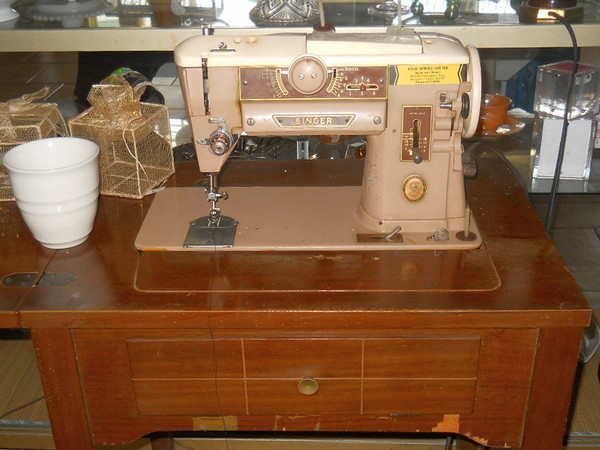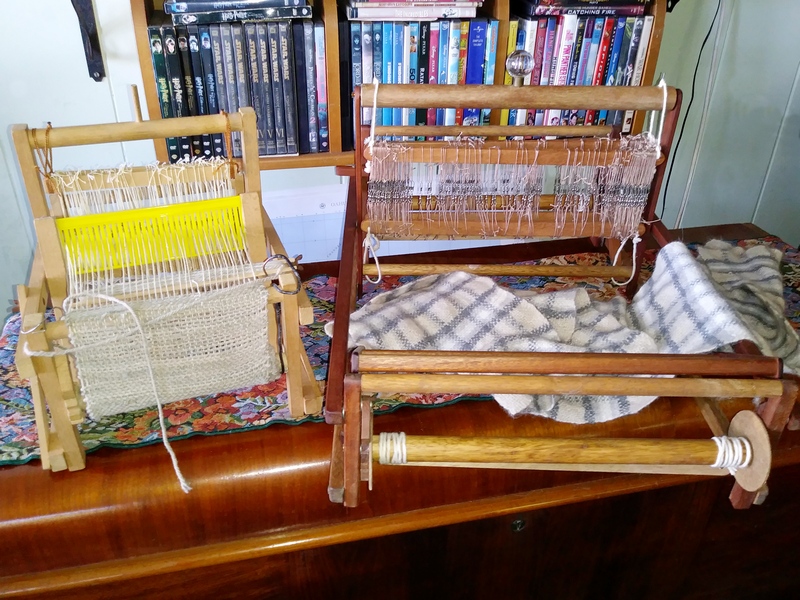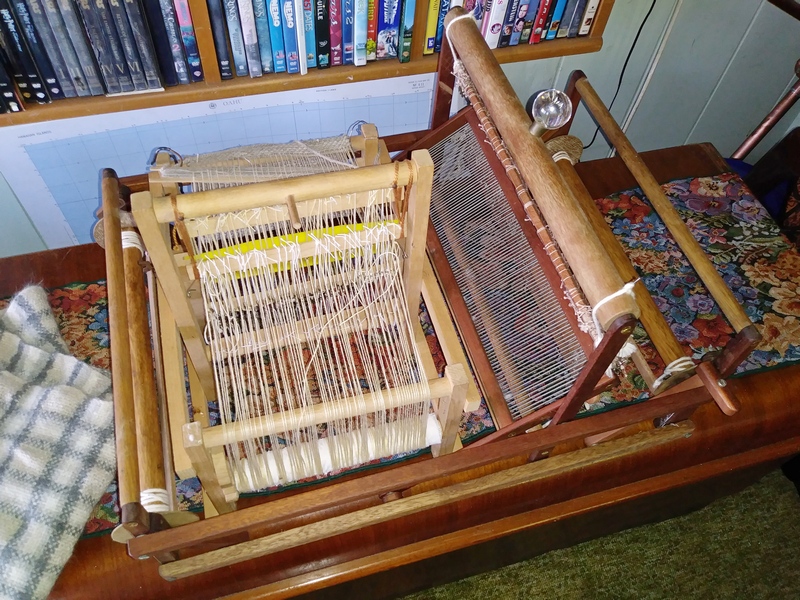I still have a '77 Kenmore which is a rugged machine that's sewn miles of fabric. For awhile I was doing boat interiors and awnings with it and it handled that beautifully. Then, at a yard sale, there was a Singer 401A in a beat up cabinet for $15. I tried selling it at a little 'antique mall' that I'm part of for $50, but nobody was interested in it. I'd later picked up a Singer Featherweight and decided not to keep it since it didn't have a zigzag stitch and while researching the Featherweight, I found out that the 401A is a solid metal direct drive machine so I took that out of the shop and tuned it up. That's now become my 'go to' machine.

That's the 'as found' in the shop picture. I'm glad it didn't sell.

It's been cleaned, tuned and set into a different cabinet with more storage spaces. The cabinet needed a lot of work, but it had been at a different yard sale for $10.
Singer Cabinet #47 as found at a yard sale.
Same cabinet with "Howard's Restore-A-Finish" wiped on it.
So far there's $35 into the machine and cabinet. A lot of times folks don't value these old machines even though there's some amazing machine work in them.
Just to add icing to an already sweet deal, this was found at our local dump about a year later:
I'd just seen a sewing machine case in the metals bin, grabbed it and stuck it in the car to look at later since it was heavy (35#) so I knew there was a machine inside. Imagine my surprise that it was a matching Singer 401A! Perfect! An 'at home' machine and a 'portable' machine. At 35#, it has a small wheeled dolly to haul it around, but it sews so much better than new machines that it's worth the weight.
The machine at the dump hadn't been working since someone had installed a lever on the cam shaft incorrectly, but it was an easy fix.
Try looking at your local thrift shops, estate sales or sales from where the kids are cleaning out their parents or auntie's house. To many folks, they're just 'an old sewing machine' and not worth much.
The only drawbacks to the Singer 401A is that it is a 'Slant-O-Matic' which means it's really easy to thread, but the feet aren't interchangeable with other Singers. The bobbins are also just a touch bigger and thinner.
The 401A bobbins are the flatter ones with only four holes in them. So, now I have to have separate bobbins and feet for the Kenmore (which uses Singer bobbins & feet) and the Singer 401A. But, the 401A is worth it, it's a very willing machine and wants to get the job done, not fussy and persnickety like the cheap new machines.
There's a whole pile of mid-century mostly metal machines out there. Find one with no electronics on it and as little plastic as possible.


















